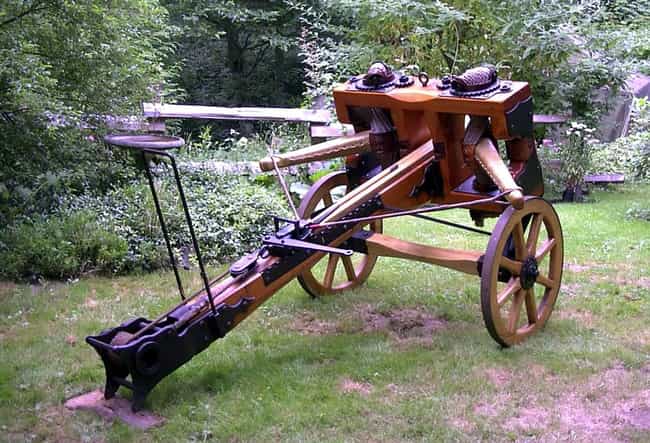
Ballista
[ranking: 1]
Ballistas were effectively giant crossbows, working on the same torsion principles as onagers. The big difference was that ballistas were meant to fire straight ahead at enemy walls instead of up and over them. Loaded with stone "cannon balls" as often as they were with the iconic "arrow" bolt, ballistas specialized in hammering enemy walls to pieces - but they could just as easily be fired into advancing soldiers.

Battering Ram
[ranking: 2]
Since a Lord of the Rings reference is pretty much inevitable on this list: Yes, Grond, Hammer of the Underworld was kind of a real thing. Granted, most invading armies didn't consist of orcs, and most rams weren't intricately carved, flaming wolf heads. Most were like the one pictured - logs suspended on ropes and covered by a roof to protect from arrow fire.
Some had flat faces, some were pointed and some had metal spears depending on whether they were used to batter down walls or wooden gates. And yes, some (like those used by the ever-stylish Romans) even had intricately molded, metal ram's heads.
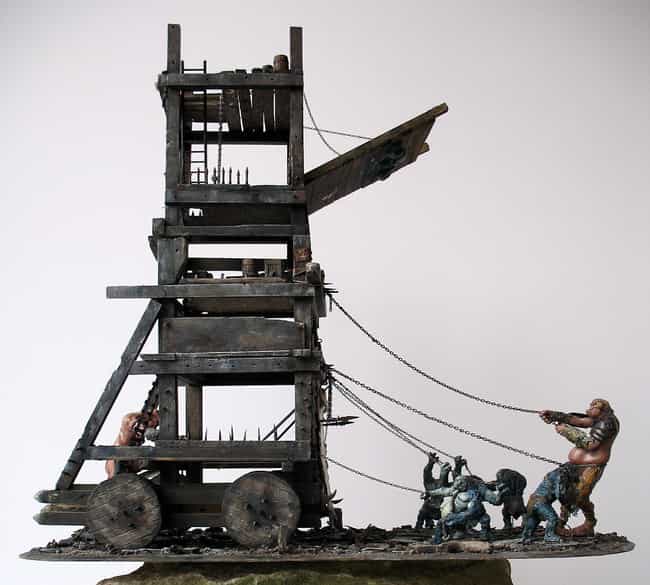
Siege Tower
[ranking: 3]
Sometimes also referred to by the generic "siege engine," towers were as much about psychological battle as practical warfare. Siege towers were basically glorified ladders meant to be wheeled up to enemy walls so invaders could quickly scale them and invade en masse. The sight of a line of massive siege towers appearing over the horizon was often enough to break a defending commander's will before the siege even began.
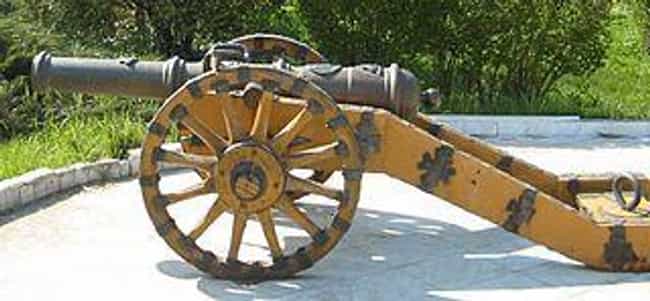
Cannons
[ranking: 4]
Cannons and big guns completely changed the rules of siege warfare almost overnight, altering the course of history almost as quickly. In 1453, the Ottoman Empire used its advanced casting and metal-working technology to produce ridiculous behemoths like the one pictured.
Mehmet II used guns like this to break down the walls of the Christian Byzantine city of Constantinople, which were thought to be unbreakable for more than a thousand years.

Infiltrators
[ranking: 5]
Infiltrators have a long and proud history in the military, and ancient "special ops" forces turned the tide of battle many times. Some of them were traitors in their cities, others were agents planted by invading forces before the invasion. Some others were sneaked into the city at the time of invasion: the Trojan Horse is a classic example.
And some say the story of Joshua's invasion of Jericho involved Hebrew special ops soldiers gaining access to the city early.
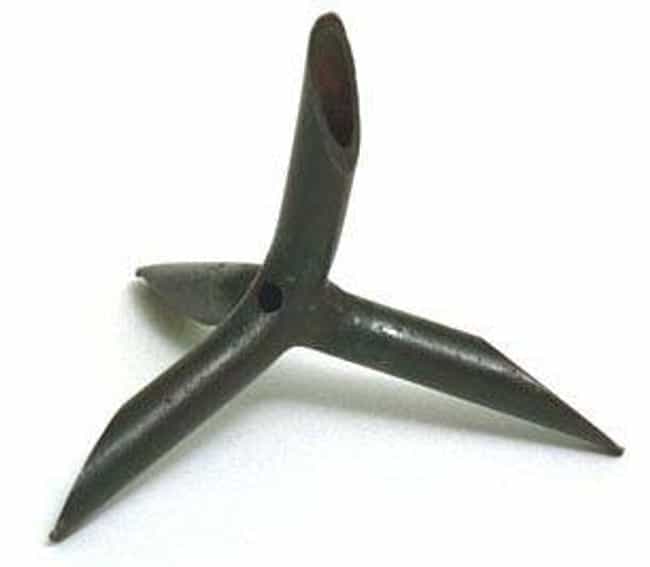
Caltrops
[ranking: 6]
Before the advent of land mines (another modern siege weapon), these nasty little devices were used to keep the area between a besieged fortification and the surrounding forces clear. The design is brilliant; no matter how a caltrop lands, there's always a spike facing up.
Imagine thousands of these nasty little things hiding in the grass around a city - that would dissuade anyone from taking a stroll in no man's land.

Moat
[ranking: 7]
Heartbreak time. The classic image of the alligator-infested, water-filled moats you see in movies and fiction are usually just that: fiction. True, a lot of moats had water in the bottom, but only because that's usually what happens when you dig a big trench in a place where rain is a regular fact of life. Moats were dug by both defenders and attackers, and were used to slow down troops, forcing them to climb down into the trench and then attempt to attack up a steep incline on the other side.
So, why not just fill them with water? Two pretty simple reasons. Water wasn't always available, and invaders could just swim, or build rafts or floating bridges, defeating the purpose of a moat.

Fire
[ranking: 8]
Fire has long been used as an implement of siege warfare, and it's seen a lot of applications. Infiltrators (sappers) used fire to burn the wooden supports out from underneath walls, while others would shoot flaming arrows and projectiles into the fortification. The smoke in itself could be a nasty weapon; armies would often load burning projectiles with noxious substances like chicken feces and poison ivy, which would turn the smoke cloud into a kind of stinky tear gas.

Circumvallation
[ranking: 9]
The circumvallation is a wall built around a besieged city or fortification. Erecting one is often the very first order of business for commanders laying siege to a defended location. Walling in a fortification essentially turns it into a giant prison for the besieged.
More importantly, it creates a defined killing zone between the walls of the fort and any army that might venture out of the city.

Plague
[ranking: 10]
The oldest bio-weapon known to man is plague. Not any specific kind, just whatever invaders could use to make an enemy sick, which was no easy thing to figure out in a time well before anyone understood how plague actually worked.
Back in 429 B.C.E., when Athens and Sparta were at each other like Hamas and Israel, the Spartan army found that the Athenians had locked themselves inside their city, which was so packed with people that citizens were standing shoulder-to-shoulder in the streets. Unfortunately, a plague had entered the port and quickly spread through the city, killing two thirds of the population in weeks.
The Spartan army was too afraid to enter, eventually turning around and going home.
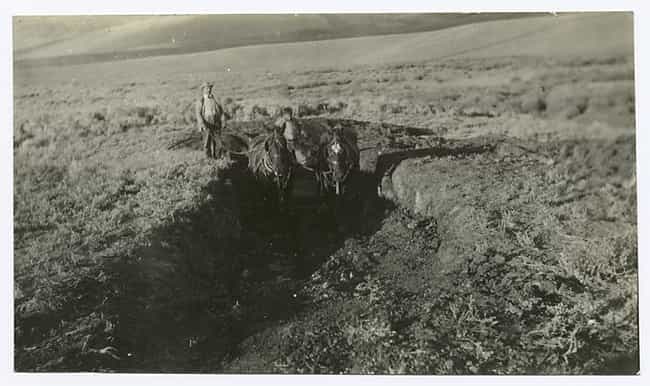
Trenches
[ranking: 11]
Tactically, a trench is different from a moat, because it acts as more of a mobile fortress than a means to slow down enemy soldiers. Trench warfare has been practiced for centuries, most notably during the world's bloodiest siege conflict, World War I. Trench warfare isn't quite obsolete these days, since it does have its applications. But modern airpower and guided missiles have largely mitigated the advantages of digging in.
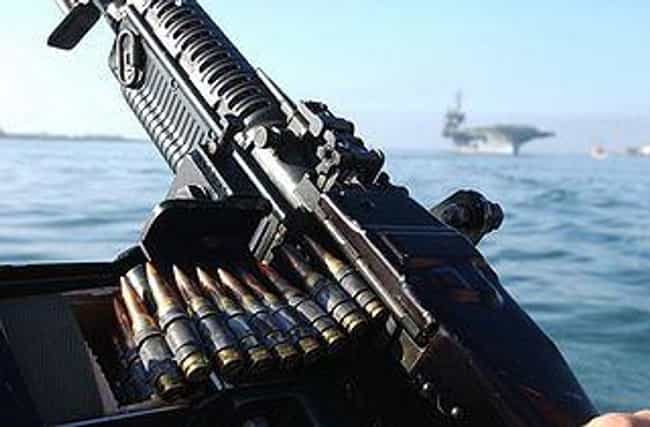
Machine Guns
[ranking: 12]
In the global siege battle that was World War I, machine gun emplacements took the place of both arrows and circumvallation. The "wall of lead" served the same purpose as any other wall, keeping enemies pinned down and unable to advance. Later wars like WWII and Korea saw the use of "pillbox" emplacements that did exactly the same thing.
Today, we tend to use mobile machine guns, but back in the early days, fixed machine gun emplacements served the same holding purpose as any wall or moat.
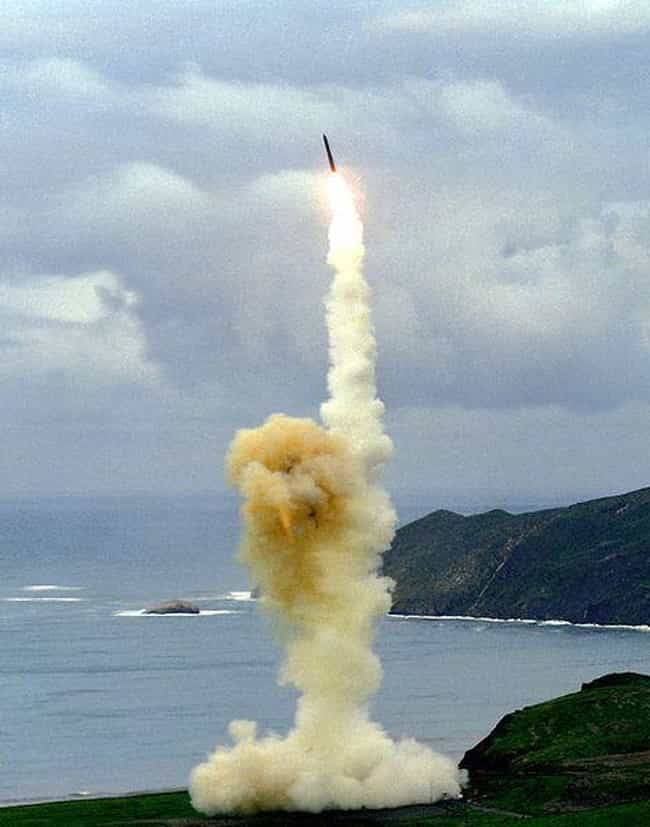
Missiles
[ranking: 13]
Missiles and rockets are the modern incarnation of trebuchet fire, often launched from hundreds of miles away by ships and ground crews. Missiles, with their range, mobility, and GPS-guided accuracy, have gradually begun to phase out more traditional artillery pieces.

Submarines
[ranking: 14]
Sieges come in all sizes, and can get especially enormous when the fortification you're starving into submission is an island the size of Britain. Germany's approach to beating Britain in WWII was siege on an international scale. Instead of building a circumvallation wall, Germany surrounded the waters of Britain with deadly U-Boat "wolf packs."
If the Reich had succeeded in cutting England and Russia's critical supply line to America, there's no doubt they would have won the war. Thankfully, Hitler's wall of submerged death had just enough holes and America had enough industrial capacity to maintain a supply of food and war materials to Europe and Russia.

Drones
[ranking: 15]
Depending on how they're used, armed drones could become history's most effective tool of siege warfare. The whole point of a siege is to cut enemy supply lines and starve them into surrender. Drones, with their ability to circle like vultures over an area for 30 hours or more, have the potential to do exactly what countervallatium and machine gun emplacements used to do. That is, to establish an "do not cross" line into or out of a restricted area. Imagine 20 or 30 Hellfire-missile-armed drones just wheeling lazily around a city's perimeter.
Granted, drones haven't yet been utilized this way in battle... for some reason. But they could easily be used as flying siege engines to seal off a city and starve it into surrender.
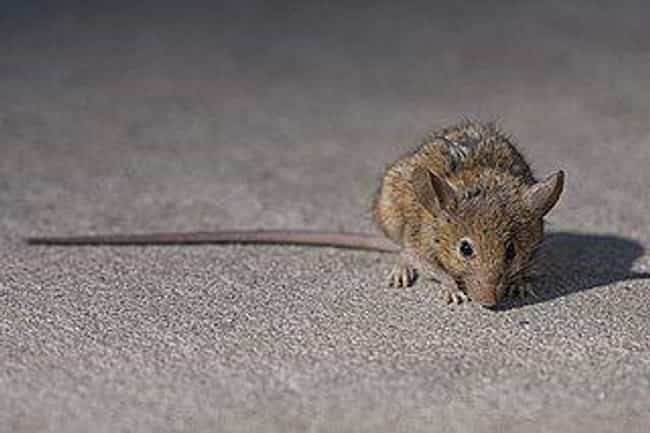
Rats
[ranking: 16]
Rats weren't just a good way to spread disease; they also got into the enemy's food stores and ravenously devoured precious grain and vegetables. While not easy to catch or deliver (alive) via catapult, rats introduced in sufficient numbers could drastically shorten the length of a siege.
New Random Display Show all by ranking(17 items)









